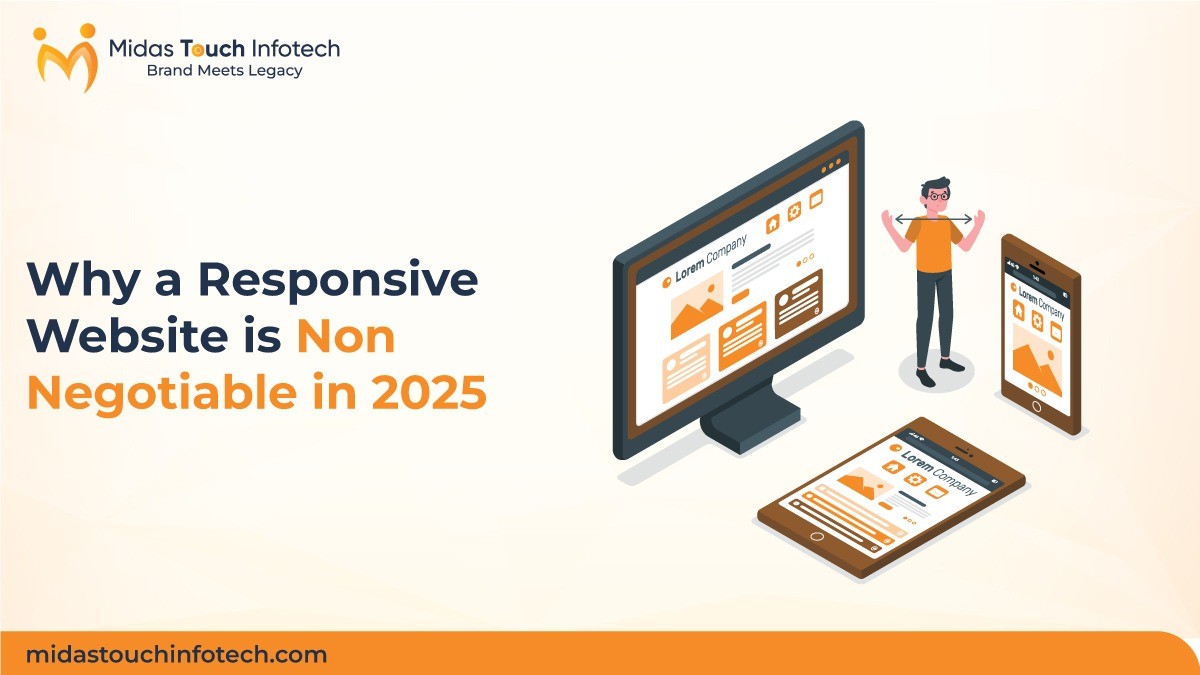In an era defined by digital interaction, the necessity for a responsive website is paramount. As we approach 2025, understanding the dynamics of responsive design becomes increasingly vital for businesses and online entities. This article delves into six compelling reasons why a responsive website is no longer just an option—it’s an imperative.
1. Enhanced User Experience Across Devices
With a plethora of devices available—from smartphones and tablets to laptops and desktop computers—users expect seamless navigation regardless of the device they employ. A responsive website automatically adjusts its layout and content to fit the screen size, ensuring that visitors have an optimal browsing experience. Imagine a visitor accessing your site on their phone. If your website is not responsive, they might face cumbersome navigation, distorted images, or inaccessible content. This can frustrate users and drive them away. In contrast, a well-designed responsive site provides intuitive access to your information and services, fostering a positive user experience that keeps visitors engaged and likely to return.
2. Satisfactory Loading Speed
In an age where seconds can determine the fate of a visitor’s experience, loading speed is critical. Responsive design enhances loading times by optimizing images, scripts, and content dynamically based on the device being used. Google itself prioritizes mobile-friendly sites in its search results, as users are more likely to engage with a site that loads swiftly. Studies have shown that a delay of even one second can lead to a significant drop in conversions. Ultimately, a responsive website is not just about aesthetics; it’s about functionality that promotes efficiency and effectiveness for users on all devices.
3. Improved Search Engine Optimization (SEO)
The digital landscape is rife with competition, making SEO a crucial element for online visibility. Search engines, particularly Google, favor responsive websites in their search algorithms. A single responsive URL simplifies link-building and reduces the chances of duplicated content, which can negatively impact search rankings. This optimization means that businesses with responsive designs are more accessible to potential customers actively searching for their offerings. By ensuring your website is responsive, you bolster its SEO strategy, enhancing visibility and, ideally, driving more traffic to your online presence.
4. Cost-Effectiveness Over Time
While the initial cost of creating a responsive website may be a deterrent for some businesses, this approach proves to be more economical in the long run. Maintaining separate sites for different devices leads to increased expenses, both in terms of development and ongoing management. A consolidated responsive design alleviates these concerns by streamlining updates and content management to a single platform. Consequently, businesses can allocate resources more efficiently, focusing on innovation and engagement rather than repetitive maintenance tasks.
5. Competitive Advantage
In a saturated market, standing out is crucial. A responsive website can serve as a defining factor for a brand, setting it apart from competitors who may have outdated or non-responsive designs. By demonstrating a commitment to modern web standards and user-centric design, businesses can attract and retain customers. Furthermore, as consumers increasingly favor brands that prioritize mobile accessibility, having a responsive website positions a company as a leader in its field, enhancing brand perception and trust.
6. Future-Proofing Your Online Presence
The rapid evolution of technology means that new devices and screen sizes will continue to emerge. A responsive website is inherently adaptable, accommodating these advancements without requiring extensive redesign. By investing in a responsive design now, businesses are effectively future-proofing their online presence. This adaptability ensures that as consumer habits shift, businesses can maintain their relevance and engage with their audience seamlessly, regardless of technological advancements or changes in user behavior.
In conclusion, the transition to a responsive website is not merely a trend; it is a strategic move that has far-reaching implications for user experience, SEO effectiveness, and a brand’s competitive strategy. As we near 2025, businesses that neglect the necessity of responsive design risk falling behind in an ever-evolving digital landscape. By focusing on the six points outlined—user experience, loading speed, SEO benefits, cost-effectiveness, competitive advantage, and future-proofing—businesses can ensure they are not simply keeping pace but leading the charge toward digital excellence. Embrace the responsive evolution, for it is the cornerstone of a successful online identity.
